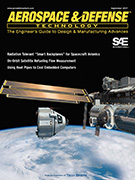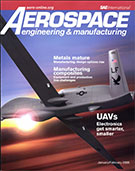Magazine

Aerospace & Defense Technology: October 2016
2016-10-03
Achieving Performance Advantages in Unmanned Systems Unmanned Vehicle Systems (UVS) are reaching new levels of functionality and performance, and it's not just for air vehicles either. COTS Embedded Systems and Link Budgets The days of proprietary embedded computing systems in military systems are numbered. Custom Designing Enclosures Using 3-D CAD Modeling Due to the advancement of 3-D computer-aided design software, enclosure manufacturing is not what it used to be. Technology advances industry. Fiber Optic Multi-Sensing Platforms Enabling Innovation Across Aerospace Organizations RECAT Wake Turbulence Recategorization New Concept for Improving the Performance of Electrically Small Antennas Microwave Radiometer for Advanced Nanosatellite Control Systems Secret Sharing Schemes and Advanced Encryption Standard SIPHER: Scalable Implementation of Primitives for Homomorphic Encryption Using Mathematics to Make Computing on Encrypted Data Secure and Practical



















